B R A W
TABLE FOR ONE, PLEASE FINDING POWER IN OUR OWN SOLITUDE
BEAUTY OVER STANDARDS:
GENDER AND ME FINDING YOUR IDENTITY OUTSIDE THE BINARY
BUZZED, BOLD AND BEAUTIFUL


TABLE FOR ONE, PLEASE FINDING POWER IN OUR OWN SOLITUDE
GENDER AND ME FINDING YOUR IDENTITY OUTSIDE THE BINARY
BUZZED, BOLD AND BEAUTIFUL

(noun) - Putting our heads on the page taking what is kept behind close doors on to a stage
(noun) - Journey through the self
(noun) - Not your everyday tabliod: highlighting the social issues behind the tea of the day
(noun)- a little bit of here, a little bit of there, a little bit iof everywhere
(noun) -Place for the LGBTQ+ Community to be heard and enact change where the government wont
(noun) - exploring the world through the lens of literature
(noun) -keep your finger on the button when it comes to the world of the catwalk and dressing room
(noun)- The sex talk you wish you had
You are currently reading the first (hopefully the first of many) online Braw magazine. Braw is Brig’s sister magazine and it has been a long and lengthy process to get this publication to this point. I can honestly say it has been one of the most rewarding experiences being Braw first elected editor.
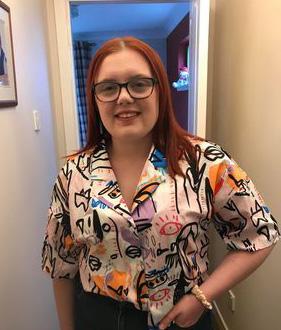
Braw was initially created by Brig’s earlier editor-in-chief, Iona Young. Braw was designed to be a magazine that reflects the student body for the student body. A publication that offers a safe space to readers and writers to explore ideas and concepts that are important to them. Through a lot of hard work from our excellent writers, a complete facelift, and a powerful team behind it we have created just that.
This magazine would not be possible without the incredible work of all our writers creating thought-provoking content spanning from sex positivity to queer empowerment to bettering the mental health of our students
Braw was just a starting idea when I was in my first year, and now I’m starting my fourth year of university as Braw editor and we are releasing our first online magazine with a recognizable online presence. I cannot imagine how quickly Braw has progressed over the last three years and I cant wait toi see where its goes in the future
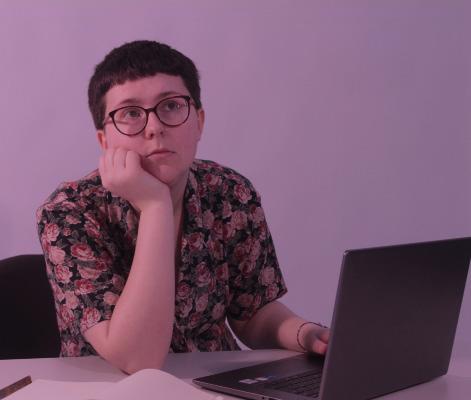 By Freya Deyell
By Freya Deyell
Question: My friend has graduated. At uni they were all about campaigning as a student. They’ve been doing a job which is very anti what they said in their “student days”. I can’t help but feel disappointed that someone I thought was a friend at uni has changed so much of their principles after uni. I’m just worried that they’ll change from the person I knew too.
Answer: It can feel very frustrating when people go back on their morals, especially someone you consider a friend. But I also don’t think we should be judging anyone for their job, particularly during a cost of living crisis. A job is a job and people need money in this day and age!
Just because they’ve taken on this role, it doesn’t necessarily mean they fully agree with it. I think you should start a conversation with them. Make it clear that you’re not attacking them for their decisions, but that you just want to talk.
There could be a million reasons why they’ve taken on the job and you won’t know until you ask. As always, I believe important conversations like these should take place face to face, not over text, if possible. There’s always a risk of words being misinterpreted and blown out of proportion.
If your friend really has changed, why? Has their new job changed their thinking, or was it always in the back of their head? If the difference in opinion is too much for you, you’ll need to decide if you want to stay friends.
People do change, that’s a fact of life: we’re all constantly developing and growing, even more so after a big life event like graduation. If it’s a change for the worse however, that’s when the problems start.
I hope you get the answers you want.
-Agony AuncleFeatured Image Credit: Ciara Tait.
once knew
My body is filled with a flutter every time I manage to find my way through the streets of Edinburgh without the need of Google Maps. When I walk into The Ox on London St., asking for a table for one, I am already ecstatic. Careful and deliberate in my strut I am guided up the stairs to a table witha view. I wonder if this was on purpose for the view of Mansfield Traquair is the best dinner partner I could ask for. I order a glass of rosé and start examining the menu. On the table is a little vase with baby’s breath and red carnations. This is my first solo dining experience. It is nice to bring a book, but I prefer a podcast when I’m on the go. No one disturbs you. It seems that the phone sends a greater signal to the world than a book can that I should want to be left alone. My mum is very adamant that phones do not belong at the dinner table. Though she is not here i pack it away, only bringing it back to take a photo of the empty chair opposite me and to check the time. It is almost six.
I’d put my outfit out on the bed before taking a shower. I stood for a little while admiring the clothes, snapped a photo, and matched the jewellery. The wait is almost the best part. Happy and excited about the night, as if I was about to meet someone for the first time. Pockets full of hope and pride. I get ready to the sound of Taylor Swift playing at full blast from my speaker. I leave and the weather is lovely, and I feel lovely, too. When I dine with people I am the last to finish. I eat slowly and like to talk. Now, here in the restaurant there is no race, I taste everything – even the mushrooms – and take breaks to just enjoy the wine and the food. A middle-aged couple joins my corner soon after and their dog lays down in the window. The man asks me if the plate in front of me is the vegetarian rice bowl, I say: ‘Yes it is. It’s very good’, but he cannot decide. Finally, after careful consideration he goes for the fish’n’chips instead.
Groups of families and friends are seated scattered all around the restaurant. I sit alone, but I am not alone. There is no bubble of conversation that I am stuck in and so I look around and listen to the laughter, to the hustle in the kitchen, and the birthday celebration. The presence of people is a delight, and the community is taking part in what we love most, good times.
Now, it is half six and I really must get going. The dog is friendly, and I do not want to leave but the show starts soon. I’ve booked one seat to a concert and I do not plan on meeting anyone before or after. Tonight is just for me, and it is a privilege to spend time with such a lovely person.
When dinner seems too big of an engagement I go to cafés. For some reason, however, this is less awkward. Perhaps it is because there is always something practical to do. Scribble intense love stories in too-pretty-to-use notebooks, read that article for the essay I really should get started on, or catch up on life with someone distant over a game of subjective guess who. It is never just a coffee, and that is okay too.
If my mind is wandering I go to see a movie. Cinema trips are magical. You can pick that kids’ film you really wanted to see. Eat all the popcorn. It is alone time of the best quality. It is just as much self-care as my skin-care routine, or buying new clothes, even a good night’s sleep. If you don’t have a skin-care routine go to the cinema and do something good for yourself. I believe that it is the simplest and cheapest way to learn how to take yourself out on dates. I can rest assured that no-one will stare and wonder what I am doing alone. It is dark, the lights are out. The sound is all-encompassing and swallows me whole into the movie.
It is scary at first: restaurants, cinemas, concerts. But it gets easier and more enjoyable every time.
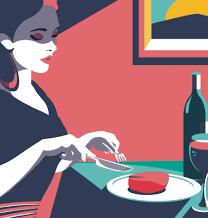 Image Credit: The Independent
Image Credit: The Independent
It is like therapy when I get to do something according to my wants and needs in the time that I demand.
Nature bathing, which in fancier terms i s known as “forest bathing ]of Shinrin-Yoku Forest Therapy’ (quite a mouthful there), has been used since the 1980s for preventative health care. Youcan practice this mindful hobby in any safe natural space. You must walk slow and silently, use your senses to bring peace and tranquillity to your mind & find those things in nature
which bring you happiness.It helps you to reconnect with nature and the earth, but also has other surprising benefits.It can help to improve your mood, which can subsequently help to reduce anxiety and perceived stress – therefore it is great for those suffering from mental health or anxiety disorders. An increased sense of connectedness
to nature is always good for appreciating the smaller things; the cheep of a bird, the swishing noise water makes, or seeing a squirrel hunting for food.Nature bathing can also boost immune function – stress hormones can compromise immune efficiency, so therefore , a walk a day will keep the doctor away

And keep those nasty phones silent and out of sight! You can’t connect to nature if you’re constantly distracted by a mobile device.
Most importantly, enjoy the experience of bathing in Mother Nature /God’s gift to us.
by your period.
By Skyler DickieCramps, bloating, irritable moodcravings…sound familiar?
For people who get periods, these are common symptoms. Periods are sore, uncomfortable and will usually last 2-7 days depending on the person.
For some people their symptoms can be more severe. Their cramps can be so painful they cannot stand, walk or move at all. Their mood can become so dangerously low they consider hurting themselves or ending their life completely. This is debilitating. This level of despair, agony and suffering can be an indication of different conditions related to periods. Many individuals get diagnosed with Endometriosis, a condition where tissue similar to the lining of the womb grows in other places, such as the ovaries and fallopian tubes. This can cause many issues such as pain during sex, back pain, severe pelvic pain and infertility issues. Another common condition is
PMDD otherwise known as Premenstrual dysphoric disorder a condition where your period symptoms feel so extreme you can struggle to cope with daily tasks. As a person with PMDD, for me it is like typical PMS but amplified by 100. The symptoms can include muscle pain, headaches, sleep problems and emotional distress.
It is important to note there is also PME. This is when a pre-existing mental illness is exacerbated by your period. PME and PMDD are often confused. The main difference is PMDD happens only during your cycle, whereas PME happens all the time but is made worse
So, now you know about these conditions, if you are relating to any or have concerns, please go speak to your doctor. Here are some self-care things you can do if suffering from any of these symptoms while waiting for a diagnosis and hopefully a treatment plan and support that works for your body. Going back to the basics - eating enough, drinking plenty of water, getting at least 10 minutes of exercise (appropriate to pain levels) and NOT isolating yourself. These are the key things for good mental health in general but will also help with your period.
Taking pain killers, using hot water bottles or patches, gentle stretching, or even having an orgasm can all relax your muscles and relieve some pain. It can be hard not to feel shame for the way you cope with your period because of the way our society treats them but focussing on the shame can make the symptoms worse. Try to be kind to yourself, your pain is valid, and you deserve to rest when you need to.You are not alone.
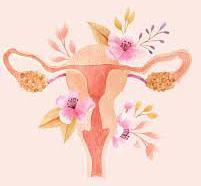 Image Credit: BBC
Image Credit: Pinterest
Image Credit: BBC
Image Credit: Pinterest
I have a brain that has the ability to make me feel as though everyone is speaking a language I can’t understand.
Sometimes, it’s like I’m looking at a different world to those around me and no matter how hard I try, the invisible glass blocking my way stops me every time.
For me, this is what it can be like living as a late diagnosed autistic person in a world built for neurotypical people. And the hardest part, I spent 22 years not being privileged to this information.
I have been labelled many things in my life, most of them couldn’t be further from the truth. Growing up I was a ‘difficult child’, always being told off for answering back, being rude or acting out. My autistic meltdowns mistaken
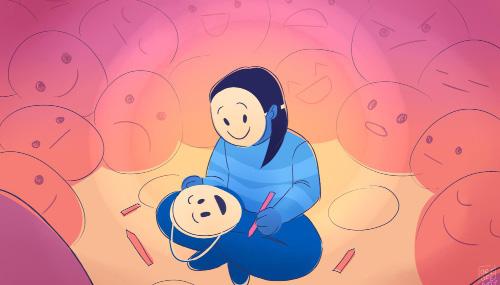
and sucking my thumb to stim mistaken for immaturity. In reality I was just a kid who couldn’t regulate the whirlwind of emotions going on inside her head. Unfortunately it’s really common in our society for girls to go misdiagnosed for so long. Partly because of our oppressive medical model, to some extent because of how girls are conditioned from a young age and also due to the lack of research on how autism presents in girls and gender nonconforming people. It is no secret that girls and boys are conditioned and moulded very differently. Girls are taught to be polite and quiet; it is rude to say no and to always make sure to smile. We hold girls to a much higher standard and in turn they have a higher pressure to conform to societies rules. Often, autistic girls will learn that their traits are not accepted by society and
those close to them and so they quickly learn to mask these traits. Masking is when autistic people suppress behaviours to be accepted by those around them, often unconsciously. I was an autistic child who struggled to conform to societies rules but at some point I learned that I had to be more like others to fit in. So, unconsciously my autistic traits were masked before I even had a chance to understand them myself, and I became a shadow of the person I could really become.
Supressing autistic traits to fit the mould doesn’t make you not autistic though,
and in turn those feelings, behaviours and cognitive thought processes still need somewhere to go. What’s most common for young girls and women who are undiagnosed is a plethora of mental health issues.
I remember dreading parties, social interactions, fearing the food, and the people and the plethora of conversations I was going to have to have that I’d spent all morning rehearsing in front of the mirror.
At eighteen I was diagnosed with borderline personality disorder, and I felt as though I was broken, something shattered that needed pills to piece back together. She does not fit with society so let us alter her brain to make sure she does.
And whilst society and the medical model was determined to label me unhinged, unstable and insane, my newly found knowledge had set me on a path to prove them wrong. What was different was me, I knew myself better than I ever did, and I had self-awareness about my trauma and the things that I struggled with – and I knew, that they did not fall under the category of mentally ill.
For the next two years of my life, I threw myself into getting
Image Credit : Lacuna magazineto know my brain, how she worked, what she needed, and teaching my inner child the empathy, patience and tools I’d needed when I was younger.
I could never understand why everyone around me was always speaking in words I did not understand and always saying the opposite of what they meant. Or why when I spoke back, they did not understand me, or shouted at me for being rude, or acting confused. I knew I saw the world differently, saw details others couldn’t see. Could find patterns in everything around me, and never understanding why made me feel isolated and alone. Until I began consuming academic journals, books, studies and all kinds of research surrounding the mechanisms that I had so badly struggled with all my life. When the words on the pages all came together ‘sensory overload,’ ‘communicates differently to neurotypical individuals,’ ‘has difficulty in social situations’, ‘repetitive behaviours’– they connected in my brain with the part of me that’s never quite understood why I never fit in. Sensory processing issues that made eating food impossible, something that if I had known, may never have turned into an eating disorder. My resistance to change and the way my brain can hyper focus and absolve everything about a topic I am interested in. The sensitivity to light, sound, textures – there was a reason for all of it. And that reason was not that I was mentally ill or unfit to be a part of society.
Realising that I was not broken, that my brain just processed things differently, and that I had been navigating a world that was not set up for me, without the tools to do so for twenty-four years, was like finally coming home to myself for the first time. The Uk’s official statistics claim that 1 in 100 people are autistic, but these figures are wildly out of date, the US claim that it is now 1 in 44, however all of this research is based on white boys, and Ireland claims 1 in 22 – so there really is no official statistic that we can say for sure, but what we do know for sure, is that girls in the UK are still being diagnosed 3-4 years plus after boys (The Autistic Girls Network).
For autistic girls like me the world often leaves us to grow up feeling like an outsider, an alien, as if we are so severely different that we will never be accepted – and it does not have to be like this.
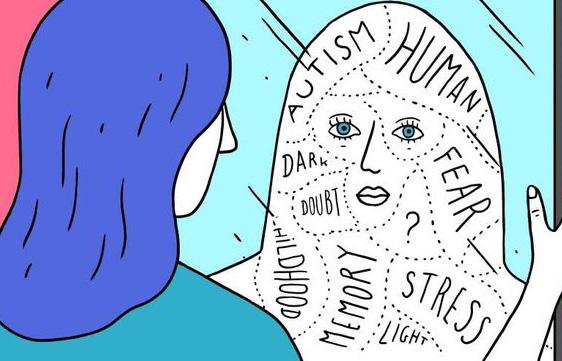
It is necessary that new re-
search is conducted where the demographic focusses on autistic girls of all ages as well as trans and gender non-conforming people– learning how autism presents in every autistic individual is paramount to allowing autistics’ to thrive and have the tools to become their most authentic self. Instead of being trapped in a system determined to have them sectioned, sedated or labelled with a misdiagnosis for half a lifetime.
Now, I stand proud that I advocated for myself, and proud of being on the way to becoming my authentic self that I was never able to be. Learning to unmask is a tough journey, accepting and understanding new things about my brain every day is certainly a challenge. But unmasking is liberating, and it allows my brain and my body to express itself however it needs to, without worrying about what others think. Which is still something I am trying to get used to. Nevertheless though, growing up autistic and undiagnosed is
a trauma in itself, and healing from that, and navigating my new life, will not be linear. There is anger, resentment and fear all wrapped up in this box, to my parents, to society, the medical professionals who dismissed me and to all those people who allow us to live in a society where the only credible research on autism is done through studying white boys. For myself, and every other autistic women who fell through the cracks,
I ask why? Why did society start pathologizing women’s experiences? Why isn’t it ok for young autistic girls and women to act out with societies norms without being labelled mentally ill and why are girls and women always unheard?
Recognize that fear is a normal and natural response to perceived threats, and that everyone experiences fear in different ways. Accepting your fear can help you move forward and act despite the discomfort.
Rather than seeing fear as a negative emotion to be avoided, view it as a signal that something important is at stake and that action is necessary. Use fear as motivation to take steps towards your goals or to protect yourself from harm
Be kind and supportive towards yourself when experiencing fear. Treat yourself with the same kindness and compassion you would offer to a friend who is going through a difficult time.

Often, our fears are fuelled by negative thoughts and beliefs. Challenge these thoughts by asking yourself if they are based on facts or assumptions, and if they are helping or hindering your progress towards your goals.
Fear can trigger a physical response in the body, such as increased heart rate and rapid breathing. Practicing relaxation techniques, such as deep breathing, meditation, or yoga, can help calm the body and reduce the intensity of the fear response.
Talking to a trusted friend, family member, or mental health professional can provide valuable support and perspective when dealing with fear. They can offer guidance and encouragement, and help you reframe your thinking in a more positive and constructive way.
Fear and failure are two words that are often associated with negative experiences. However, there are important reasons why we should rethink our perception of these notions. Let’s explore the importance of fear and failure in our lives in the hope to break down the stereotypes attached to them.
The feeling of fear is a natural response to a perceived threat or danger. It is often characterized by feelings of unease, apprehension, or dread, along with physiological responses such as increased heart rate, rapid breathing, and sweating. In some cases, fear can be a survival tool that helps us avoid danger and stay safe. With this said, fear can also manifest in situations where there is no immediate threat, such as when we face new challenges or responsibilities. In these situations, it is important to recognize that feeling fear is valid and normal. It is a sign that we care deeply about the outcome and want to do our best.
It is important to note that everyone experiences fear and nervousness in their lives at some point. It can be tough to face these feelings head on and not let them stunt your progress or dreams; but not letting these feelings dominate our decisions or hold us back from pursuing our goals is really important to our wellbeing. When a situation arises and you’re afraid, Instead try using your fear as a signal of the importance of the situation and as motivation to push through and succeed.
Failing is a common experience that many people encounter at some point in their lives. It can occur in different aspects of life such as academics, career, relationships, or personal endeavours. Failing can be a subjective experience, with different individuals and situations having varying definitions of what constitutes failure. However, failing is not always a negative experience. In fact, it can provide opportunities for growth, learning, and self-improvement.
One of the benefits of failing is the opportunity it presents for learning and growth. When we fail, we have the chance to reflect on what went wrong, identify our mistakes, and adjust for the future. This can help us develop resilience, problem-solving skills, and a growth mindset that allows us to approach challenges with a sense of curiosity and openness to learning.
Failing can also help us clarify our values and priorities. Sometimes we set goals that are not aligned with our true desires or strengths and failing can provide the necessary feedback to reassess and redirect our efforts towards more fulfilling pursuits.
Failing is also great because it can be a source of motivation and inspiration. Many successful individuals have experienced failure multiple times before achieving their goals, and these setbacks can provide valuable lessons and insights that help us persevere in the face of adversity.
Of course, failing can be a difficult and an uncomfortable experience. It can be discouraging and frustrating, especially if we have high expectations or attach a lot of significance to the task at hand. However, how individuals respond to failure can influence their future success and resilience in facing challenges.
I was about 15 when I fainted out of exhaustion for the first time. I had studied for an exam for hours, forgot the time, forgot to eat and went to bed after studying.
When I woke up to go to the toilet at night, I found myself lying on the floor.
The funniest part about this story is the morning after. My mum tried to make me understand that I fainted and not “just fallen asleep on the toilet” - like I was convinced I had. It took my mum three painful hours to finally make me go to the hospital to get a check-up. News flash: I actually had fainted on the toilet at night because I studied too long. Not only that, but I also had a concussion and had to stay at the hospital for three whole days until my body function recovered.
Moral of the story: Screw school, don´t study. Unfortunately , it´s not that The point I want to make is: None of this would have happened if I had taken a breath for one second and taken healthy breaks in between. My body wouldn´t have had to go through a complete shutdown. That is why checking in with your body is a vital habit to gain.
Sometimes trying harder only throws you off even more. You wouldn´t scream at your car to go faster after it has run out of gasoline; you would take a break at the gas station to
tank new fuel.
Why is it that we don´t treat our body at least as well as we would treat an object? There are two fundamental problems: the perception of the self and self-worth. Sounds too spiritual and vague?
Stick with me.
1.We live in our bodies, in ourselves, without distinguishing between the body and the self. We see it as one. While your body and your soul are directly tied to one another and influence each other constantly, they are not the exact same thing.
2.Self-worth is a deep subject that many people have written many books about. I will not even try to go there and keep it very simple: If you valued yourself enough, you would not treat yourself this way.
You don´t treat others this way, so what is the difference? Depriving yourself of the pleasure of a break is harmful.
Well, all of this is great, but what is the solution, right?
There is no one-fits-all. However, trying a new approach has always helped me gain some perspective. If it doesn´t work, you can always change it.
You are more than your achievements.
Take a break. You are worth it.
Image Credit : Self Care Emporium
By Deanna DawnIntuitive living, described simply, is the act of listening to your inner wisdom and intuition before making decisions regarding your lifestyle or daily choices. It is a careful balance of listening to your body, mind and paying attention to your spiritual needs. To live intuitively is to listen to your gut feelings and unconscious knowing consistently. By allowing your intuition to lead your actions, intuitive living instils a deep sense of fulfilment and purpose. In today’s world, it’s not uncommon to be swept up in deadlines, social life stresses, negative thinking and worries about the future.
Intuitive living slows down your internal pace, allowing you to experience gratitude and reduce stress, therefore, increasing your physical and mental well-being. What does it take to live intuitively?
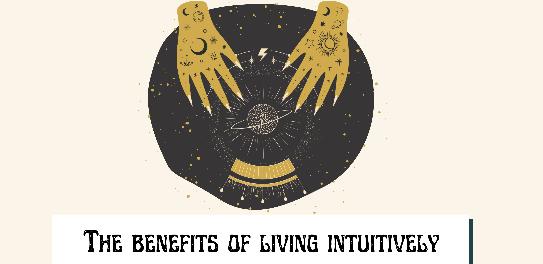
Intuitive living is a commitment made to the self. It takes discipline, but in a way that many are unfamiliar with. Instead of forcing yourself to stick to a strict routine that perhaps doesn’t serve you as well as it should, intuitive living encourages honesty as to how much you can do without sacrificing your wellbeing. It also means understanding when, for example, a social gathering or a day full of your favourite foods is needed to soothe the soul and increase life-satisfaction.
A lot of this method of living relies on your ability to trust your intuition. We are taught to put aside personal inclinations in favour of work, school and others. While sometimes necessary, this blocks us from fully experiencing our feelings and taking into account what we need. By trusting that your intuition knows what is in your highest good, you can ease into a new way of experiencing life more comfortably.
Be spontaneous
It may sound frightening to make plans spontaneously, or to change them at the last minute, but this is a key part of intuitive living. Giving yourself permission to be flexible allows you to work in line with what your body is asking you for.
Change the way you speak
It’s too easy to explain away self-care by labelling it as a ‘lazy day’ or another minimising phrase. Consider how you speak to yourself and refer to your actions. Are you being ‘lazy’ or taking valuable rest?
Try to start sentences which would otherwise be negative with words like “I feel...” or “My body is telling me...”. For many, intuitive living is one of the best decisions they have made. The benefits vary from person to person, as does the extent to which someone commits to this method of living.
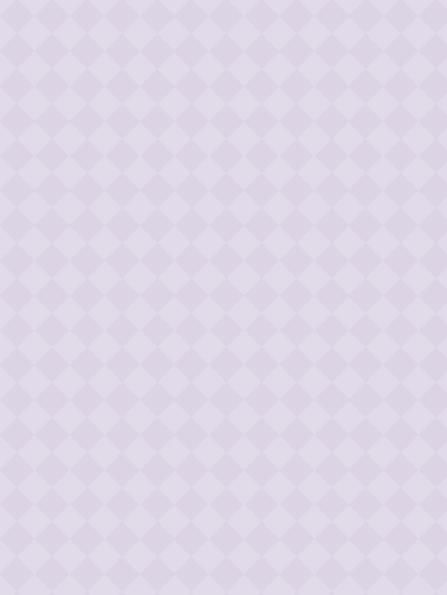 By Sofia Scula ti
By Sofia Scula ti
Lady Gaga has been in the entertainment industry for almost two decades and is no stranger to being called crazy by the press and public, due to her extravagant stunts and stylistic choices. Her boldness has paid off by making her a household name in the pop Hall of Fame, however, unapologetic and unstoppable women do not fare well in a male-dominated industry.
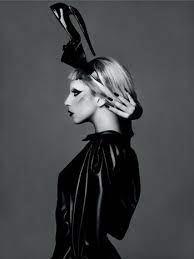
She has officially been cast as the new Harley Quinn in Joaquin Phoenix’s Jok er sequel and it has been confirmed that her version of the character will be a far cry from previous depictions such as the comic’s or Margot Robbie’s, who famously brought Quinn to live action in Suicide Squad. In this depiction, in fact, the two main characters will meet in Arkham Asylum, where we left off Arthur Flack in Joker, only this time, Quinn will be a fellow patient, rather than his psychologist.
Her playing a clinically deranged character has caused quite a stir, with many claiming it might be a risky choice for Gaga

as it could be “too close to home”. However, her fierce army of Monsters, alongside the film’s cinematographer, Lawrence Sher, are convinced she is the perfect choice for the role, with Sher admitting in an interview that “The two (Phoenix and Gaga) will be exactly what we hope, which is exciting, and we’ll find magic every day on set. Hopefully, we’ll also have a bit of madness in there. We like when there is a little bit of chaos.”
Once her music career was secured, she took on acting and, in the last couple of years, has portrayed roles such as the Countess in American Horror Story, Ally in the fourth remake of A Star Is Born and Patrizia Reggiani in House of Gucci, three women united by great determination and…original solutions to unforeseen obstacles (see the former and the latter). Harley Quinn is indisputably a challenge for any actor, as she requires to tap into humanity’s darkest realms and oscillate between sanity and non in order to give an incredible performance. Gaga is a self -proclaimed method actor, having reportedly spoken with an Italian accent throughout the whole shooting of House of Gucci, on and off camera. So playing a mentally unstable role can be a dangerous task. The artist has been confirmed to suffer from depression and anxiety and this has some fans worried the method acting might affect her own mental health, much like what happened to Heath Ledger while playing the role of Joker in the 2008 The Dark Knight.
Kourtney Kardashian announced via an Instagram post that she is launching new line of vaginal health supplements, Lemme. Kourtney Kardashian says “Vaginal health is such an important part of a woman’s overall well-being (and not talked about enough)” which is true enough, but that’s where it starts to go downhill. The fact that vaginal health and well-being aren’t well-known subjects is why we keep seeing products like this. However, what Kourtney Kardashian has done has identified a real problem impacting people and chosen to exploit their vulnerability rather than solve it.
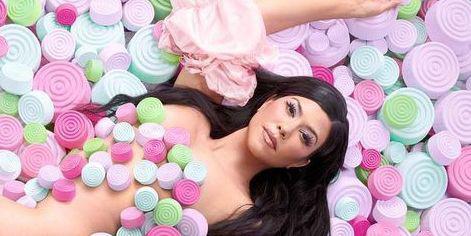
“We combined real pineapple and Vitamin C with the power of clinically-studied SNZ 1969™ probiotics to target vaginal health and pH levels that support freshness and taste.” claims the Instagram post.
Braw spoke with Dr Tom Bowers, a Trainee Histopathologist in England, about the claims made by Kardashian’s supplement.
“There is a long history of health products aimed at people with vaginas that make claims to improving cleanliness, odour, pH balance, etc.
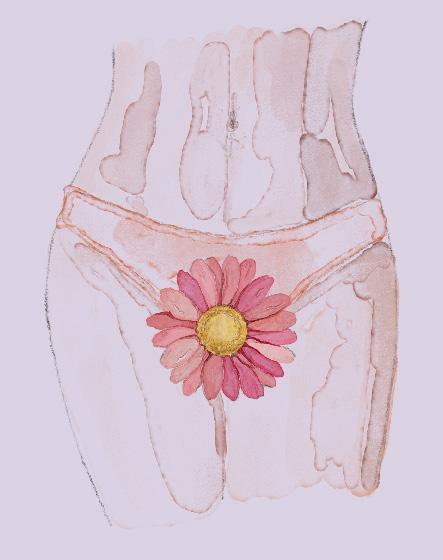
At best these are dubious and in the case of some historical remedies, outright harmful,” said Dr Bowers. Products such as these supplements imply that the natural odour and taste of a vagina is a problem which needs to be solved. The idea of somehow ‘improving’ them in order to appeal to a partner is highly misogynistic. “I like that we are bringing attention to vaginal health but this idea that your vagina is dirty and should smell like a flower or taste like a bakery is ridiculous,” Dr Carolyn Moyers, an OB-GYN in Texas and CEO of Sky Women’s Health spoke about the new product to BuzzFeed News “The vagina is actually self-cleaning. This distorts our body images and makes women feel something is wrong with them; it perpetuates this idea that we are broken and need to fix our body to be appealing.”
A concern of many people with regard to products like this one is that people will ignore genuine health concerns and medical advice and instead seek out cosmetic solutions. One of the main things that can cause an unusual smell in the vagina is bacterial vaginosis, but as Dr Bowers notes, there is no evidence that this supplement or
any of its ingredients will help. Braw asked Dr Bowers what they would recommend if someone noticed an unusual scent. “While this product seems unlikely to cause harm, it is also not likely to offer significant medical benefit. The vagina is a remarkable organ and like most of the human body, very capable of maintaining its own environment. Day-to-day changes in odour and secretions are natural and highly variable between individuals and represent numerous factors including diet and hormonal changes. In the case where someone suspects they may be suffering from BV or any other abnormal vaginal discharge, then they should consult their GP, local sexual health clinic or other appropriate specialist services.
Its clear the this product is praying on people’s natural insecurities, which is heavily influenced by society beauty standards. Vaginas are the superhero of the body, tell me an organ that is the entry point for other human life as well as being responsible for the biggest pleasure centre in the human body. You wouldn’t perform with the pressure to fit into this perfect little pink box so why does society and the Kardashian empire think vaginas will.
Image Credit :ELLEFor my 21st birthday, I hopped on a plane to Dublin and fell in love with the Guinness - I mean the city. We booked last minute Ryanair flights from Edinburgh that set us back around £40 each for a return, paying the extra to sit together.
Three days’ worth of belongings stuffed into a small rucksack and we were determined to make the most of our trip, leaving some room for souvenirs.
Dublin welcomed us with sunny skies thankfully, meaning we could explore the city on foot. In my opinion, this is the best way to find hidden gems and see the glory.
Pro tip: you can buy Dublin Express tickets from a stand outside the airport. We were super organised, however, and had them ready on our phones. Dublin is built around the River Liffey, which flows through the centre and separates the north and south sides.
The Liffey’s gentle flow through Dublin’s vibrant cityscape is a picturesque blend of urban energy and natural serenity. Being the massive Skulduggery Pleasant fan I am, I simply had to see the Ha’Penny Bridge and it did not disappoint.
In fact, every single bridge
over the Liffey is unique in its own way, with distinctive and unrivalled designs.
Traversing Dublin on foot let us see iconic buildings, cobbled streets and the charm of the city.
Even the traffic crossings are miles better than the ones at home. They bloop bloop bloop instead of beep beep beep.
You don’t even need to press a button, just hover your hand near a sensor. Goodbye and good riddance germs.

The first day, we walked as far as we could. We saw the spire of Dublin, caught our first glimpse of Temple Bar and stumbled across St Stephen’s Green.
That night, in the hotel bar, we enjoyed our first pint of Guinness while listening to a fantastic singer.
The Guinness in Dublin is next level, nearing the point where I wasn’t sure if I could ever enjoy it anywhere else. It was fresh, smooth, flavourful and simply divine.
It’ll come as no surprise that we took on the Guinness Storehouse the next day. It’s an absolute must-do for any Dublin visitor.
Student tickets were priced at €22 and this included a self-guided tour, a Guinness tasting experience, and a glorious pint in Gravity Bar overlooking the entire city. Each floor tells a story, from the ingredients to the advertising, and we found ourselves transfixed by the little things that go into making
the stout, like how the barrels were made. Next, we visited the Irish Museum of Modern Art which is housed in a beautiful building.
To be honest, I wasn’t the biggest fan of the exhibits and that’s okay. Art is subjective, that’s the whole point, and there were plenty of people enjoying it. We walked back to the centre for a pint in the Temple Bar - as typical tourists do - and managed to find a green postbox to show my mum on the way. The thought of leaving Dublin was unbearable. Three days simply wasn’t enough time but my poor student bank account thought otherwise. We made two stops before
returning to the airport: Trinity College and the National Gallery of Ireland.

Trinity was breathtaking. Nothing will ever compare to the magnificent Old Library, adorned with books, busts and gawping visitors, and the Book of Kells was a medieval masterpiece.
I loved the range of artwork and how timeless it was. Even the children’s display impressed me. Dublin gave me the best birthday I’ve ever had and everyone should go, even if it is just to be enlightened by the Guinness. It truly is next level, but so is the entire city.
Image Credit: Explore DublinBeware of the Bargains!
Womxn, more than men, tend to get scammed a lot: locals can smell tourists from a mile away, and are not afraid to ask women for outrageous prices! Now, I’m not saying you should disrespect them by offering ridiculously low prices but it’s good to stand your ground and let them know you are aware of how much things are worth. Taxi prices and organised tours are prime examples.
The mindful feminist
Now, remember, not all Coun-
tries have the same mentality. Unfortunately, some cultures don’t view women the same way you might be used to. Feminist culture shock is something you should be prepared for, and sadly there is no way out of it: you have to understand you are in their home now and have to respect their ways for what they are.
Gals and non-binary pals looking out for each other
If you are on a budget but don’t feel safe going to mixed hostels, there are womxn-only hostels, as well as sites like Couch Surfing or Host a Sister. You should check out what options
Let’s be honest, there is nothing more daunting than embarking on the great adventure of travelling, especially when you are a woman or read as one.
The world news is seldom comforting, and it can make us overthink our destinations or even cancel our plans, but there is nothing to be afraid of, really.
Even since I was a baby, my mum has been taking me all over the World, sharing her passion for travelling and teaching me skills I needed to stay ahead of the game. A little secret? … we’ve never travelled with a man! So, let’s debunk the myth that women need to be accompanied by men to travel safely
items.
the country you are heading to has to offer.
Protect your valuables
If you have hold luggage, leave your favourite items out of it! Always have your toiletries and at least 1 outfit in your hand luggage: airports are not as organised as they used to be, and, especially if you have a transfer … you don’t want to give them the benefit of the doubt with vital
Fashion Smarts
If you are a fashionista (even a backpacking one) always pack your bag clothes in a maximum of two to three colours that go well together, so you’ll have numerous outfits to mix and match without having to carry an overpacked bag around.
For more helpful travel tips check out the full article on our website
Ever wondered what it’s like to live abroad? Imagine for a moment- a completely different culture, most likely a foreign language and thousands of miles away from home. Sounds exciting, doesn’t it? For many students that fantasy can become reality, thanks to the study abroad options for third-years. And we’re about to tell you why you should apply for it.
What is study abroad ?
Study abroad is either a year or a semester you spend on an exchange at a partner university. You get to experience living abroad while continuing your degree. It’s like a very long holiday, except you need to open your textbook, sometimes.
Is it expensive?
Thankfully most tuition fees are taken care of by your funding body and your tutition fees are waived at the abroad university. However be sure to check because
some funding bodies do have specific policies. The rest really depends where you go. You might apply to a university in a country where life is much cheaper than the UK. If it’s still in Europe, you won’t even spend that much on the plane tickets. Although, a lot of students end up on the other side of the globe, like in Australia, Japan or in the States. Plane tickets there are much more expensive, and costs of living might prove a little higher. You always have to make sure you sort things like imsurance and
visa’s if nesseary but the paperwork is worth it. Is it worth it?
100 per cent, you’ll absolutely love it. You will have the chance to make new friends, explore new places and learn all about a culture from the locals, perhaps even pick up a new language.
It’ll be like being the main character of a show you can’t take your eyes off. It’s a chance for personal growth, but it’s also a chance to flex to your friends that you’re studying abroad. Trust me, they’ll be jealous.
I study abroad in San Diego, California, and I’m loved every second of it. Truth be told, every day was an adventure. Meeting new people, exploring, partying, just living my dream.
Changing your environment is sometimes enough to escape all your problems and sometimes escape is what we need to re group.
Reading this and thinking, i wish that was me? Apply to study abroad now!
One of the things that is emblematic of the 2020s is an increasing understanding of how diverse our experience of gender can be. In the past, most people who felt uncomfortable with the binary choice of ‘man’ or ‘woman’ had to just deal with it. Slowly but surely, we are casting off the gender binary and proclaiming who we are. Often though, the first step to understanding something so nebulous is having the words to mould our ideas around. For a long time, I thought I was just weird and wrong in some way. The label of ‘woman’ made my skin crawl, but ‘man’ felt even more wrong, and my limited understanding of ‘non-binary’ meant I didn’t feel like I fit that either. I figured I was just bad at being a person.
When I was introduced to the term ‘genderqueer’ things really started to slot into place. I finally felt like I had a place in the world.
Labels aren’t the be-all-end-all but vocabulary can lead to understanding, so without further ado, let me present: Let BRAW be your guide
Non-binary - if someone says they are non-binary, they are really just saying that they aren’t a man and they aren’t a woman. That level of distinction might be enough for them and there’s no need to get more specific.
Genderqueer - this term is often, but not always, interchangeable with other similar ones, such as gender non-conforming or gender variant. Each individual will have a preferred term and you should respect their choice. A genderqueer person’s sense of identity is often wrapped up in the word ‘queer’ and can be quite a personal experience. Some people use it while they are still figuring out the finer details of their identity before switching to something that fits them better, and some people set up camp in genderqueer.
Agender - the prefix ‘a’ is often used to denote being without something, and someone who identifies as agender is someone who does not identify with gender at all. This can be a very complex identity to come to terms with because of the gendered nature of our society.
Bigender - a fluid form of gender identity usually used when someone feels that they move between the two ends of the binary gender spectrum of male and female. Some bigender people feel they identify as both male and female.
Demigender - demigender people usually identify more with one gender identity than another, but still not as completely as a cisgender person. They also often have some degree of identifying with another gender to a lesser degree. A demigirl will identify as being a girl more than other genders, but may also feel a connection to another gender.
Non-binary is both an identity in itself and an umbrella term. Any gender outside the male-female binary is by definition non-binary, and it emcompasses people who feel like they are a combination of male and female, neither male nor female, or something completely disconnected from male and female. They can also be very fluid identities.
These are not all the non-binary gender identities that exist, but they are some of the more common ones. If a person tells you they experience gender in a certain way, trust them to be the arbiter of their own experience.
In a strictly definitional sense, yes. Someone who is transgender is someone who does not identify with the gender they were assigned at birth. Because humans tend to assign genders based on external genitalia and there are no physical elements associated with being non-binary, everyone is assigned either male or female, and identifying outwith that is a transgender experience.
However, not all non-binary people identify with the label of transgender. Gender is something that is hard to stratify based on strict definitions and hard lines, so the idea that someone can be non-binary but not feel they live a trans experience is entirely unsurprising.
For some people, pronouns are small bursts of gender euphoria or shards of dysphoria, whereas for some they are simply language tools. No set of pronouns is attached to any non-binary identity and the only way to know for sure what someone prefers is to ask them and then to respect their choice.
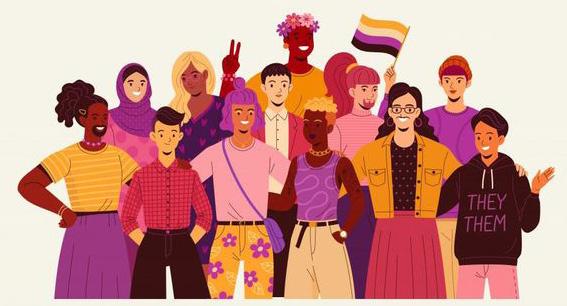 By Finola Clarke
By Finola Clarke
Misogyny in the queer community is an interesting and almost conflicting matter, how does an already marginalised community manage to enact the discriminations of a heteropatriarchal world at times?
I say this is relation to lesbian women, perhaps the answer lies that the lesbian identity is one that excludes men. Men are neither desired by lesbians nor do lesbians desire men so it must be this perceived ‘exclusion’ that angers men, the only way they perceive lesbians is through a fetishized way thus diminishing lesbians to something only for the male gaze. Although this is true there is also a flip side, gay men seem to love women. This is done in a very selective manner though; they take the parts of femininity which are deemed ‘fun’ and ‘iconic’ in their eyes and leave the rest behind. Through this superficial lens the ‘shiny’ and ‘fun’ parts

of femininity are worshipped and the not so fun parts are ignored or cast aside. I think this comes from a contrasting closeness and distance that can be seen with gay men’s relationship with femininity. Often times misogyny stems from a place of viewing women as inferior in an objectified manner but since gay men do not view women in a sexually desirable way a distance is created. As the assumption is made that gay men cannot oppress women in the same way that straight men do.
This assumption that they are not ‘threatening’ in the same way. Whilst this can be true to a certain extent in does seem as if gay men forget that they hold a card of privilege, they are still men.
Their pejorative language toward women still has the same effect as if a straight man said the same thing, Madonna is a gay icon until she’s had one
too many plastic surgeries and now she’s ‘too old’ and ‘needs to retire’. Her physicality and gender expression are no longer palatable to the gay male gaze and thus she is discarded, the ideal ‘femininity’ that gay men seem to want is not to dissimilar to the mainstream attitudes showcased toward women. Although the praise is tenfold so is the condemnation. Just because they dress it up with an attitude of feeling a kinship with the challenges that their icons overcome doesn’t mean that gay men are immune to misogyny that plagues women as well.
To be honest, the nuances and intricoes of the gay male misogyny feel difficult to capture but I think it can be boiled down to some key concepts; despite the differences between women and gay men the latter still have the ability to benefit from the patriarchal structures and attitudes (as well as perpetuate them)
and so this can be utilised as a shield.
Whilst they are oppressed due to be being gay, they are not due to being men and so this kinship with female ‘gay icons’ comes from this shared sense of oppression, but this oppression is not the same which is often times forgotten. Hence why the use of pejorative language towards women can be seen to be used in good fun ignoring the implications it holds all in the name of a good laugh at the expense of the group they hold in high esteem. Femininity is only held in high esteem by gay men if it is something that fits their view of femineity, oftentimes a hyper femineity that misses out the depths of what is to be a woman. In this way it could be said that a gay male gaze is just as bad as a straight male gaze as both only value femininity in certain ways and don’t allow women to just be but rather demand a high standard to be met.
Image Credit: The conservationDo you ever feel like something is wrong with you, without being able to place it? You’re going around missing something and not even realising it? You may be able to go your whole life without this feeling nagging at your brain, filling your mind, haunting your thoughts. Sometimes, I truly wish this feeling was never awoken within me.
For me, it happened the summer before my first year of university. It was a mere comment from someone online who said I looked ‘androgynous’ in a photo. It made me smile,
but I didn’t give it much thought. But they kept insisting ‘you seem like someone who is neither feminine nor masculine’, they said about another picture.
Having a few transgender friends, I took it as a compliment. Then, the next week I was walking my dog and got into a strangely pensive mood, resulting in suddenly being reminded of those two separate situations. Because, the thing is - I agreed with them. I did look androgynous in those photos. Arguably, I looked androgynous in others as well, or whenever I looked in the mirror. I’ve always been comfortable with my gender identity, or so I thought.
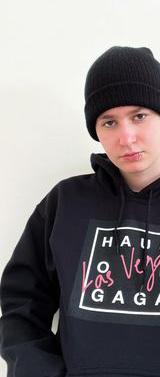
Those two comments awakened something and triggered a whole gender identity crisis I was in no way, shape or form prepared for.
I wanted to get rid of those thoughts. Whenever the gender question popped into my mind, I’d immediately think: ‘I’m a girl,’ followed by: ‘Am I? What does it even mean to be a girl?’
I started considering things I’d never considered before. I started thinking how I’ve always liked more baggy clothes; how I preferred wearing leather jackets that made my shoulders look broader; how I often picked shoes or accessories from the unisex shelf; how I liked wearing makeup one day and hated it another; how I disliked skirts and dresses; how I was called a tomboy in primary school; how my grandma would say I should have been more feminine.
By Jules AdamskaIt all started building a picture in my head, like puzzle pieces coming together. Suddenly, the picture was there, but it was blurry. ‘If I’m not a girl,’ I thought, ‘then what the hell am I?’
I realised I felt like an imposter in a female body. I didn’t feel like a woman, but then again, I didn’t feel like a man either. I felt more masculine in the same way I felt more feminine sometimes, depending on the day. I could never decide, it was always changing.
Then, I remembered how I had gone shopping with my mum to get a prom dress. I really liked the dress, and I didn’t hate wearing it in the dressing room. I tried it on a couple more times and, while sometimes I felt uncomfortable in it, other times I quite liked it.
I wanted to get rid of those thoughts. Whenever the gender question popped into my mind, I’d immediately think: ‘I’m a girl,’ followed by: ‘Am I? What does it even mean to be a girl?’
On the day prom came, I could only think about the dress and heavy makeup I was wearing. I didn’t mind the stilettos, but I hated the tight fit of the dress, revealing all of my body curves. I wanted to cover it all. I couldn’t stop thinking: ‘I should’ve worn a suit,’ even though no other girl was wearing one.
I liked how bushy the makeup artists made my eyebrows look, but I hated the pink, glossy lipstick. It made my mouth look soft in a very feminine way. It was incredibly uncomfortable
I don’t like my birth name, I don’t think I ever really liked it, always preferring to be called some variation of it. When my father gave me a gender-neutral nickname, I immediately wanted everyone to address me using it. My 16-year-old self didn’t question it. To my 19-year-old self, it was another puzzle piece.
Months after ignoring my gender, the awakening began, I told someone who was comfortable with their identity that I was struggling with mine. We were talking about being non-binary and what that meant for different people. ‘Sometimes, I wish I had a d****,’ I confessed. They looked at me with a conflicted face. ‘I don’t think you’re a girl, Jules,’ they replied. I didn’t think so either.
One time during the pandemic, I was coming back home and one of my neighbours said, ‘What’s up, man?’ after seeing me. I greeted him and, after recognising me immediately apologised for confusing me with a guy. I told him not to worry about it, because I didn’t. In fact, I couldn’t stop smiling long after entering my flat. I realised I wanted to be seen as male that day, and experiencing it brought a strange sense of euphoria I’d never felt before. I’ve never described myself as non-binary, the term doesn’t feel right.
Sometimes I wake up, do my makeup, brush my hair, look into the mirror and see a girl. I use she/her pronouns and it doesn’t feel weird to hear people address me as such.
At other times, I wake up and I hate my body. I make my chest as flat as possible; I wear hoodies and cargo pants to hide my physique. I hide all my hair inside a hat and wear a face mask. I slouch more than I normally do. I take longer steps, too self-aware of my hips going from side to side as I walk. I wish to be a ‘he.’
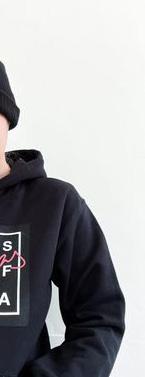
Having done a ridiculous amount of research on it - and also having experienced a ridiculous amount of mental breakdowns after repressing it for so long - I am now ready to call myself a non-cisgender person. I’m comfortable enough to put a label on it, though I realise labelling isn’t necessary, it gives me stability and support to know I’m not alone in this.
I’m not out of the closet with this, having only come out to a limited number of people in my closest circle. I’m pretty sure that’ll change after this article is published, but I don’t care. Let people think whatever they want; if they have a problem that’s their problem, not mine.
Remember baby gay, you never have any responsibility of coming out to anyone. If people assume you’re straight and you don’t feel like correcting them, that’s completely fine. You don’t need a grand reveal to announce to the world you’re not a cishet.
If you want one, go for it, but remember - you’re coming out is for you, not other people. If I learnt anything from my gender identity crisis, it’s that it is a full-on crisis. And it lasts, and lasts, and lasts like it’s never going to end. Sometimes it gets easier, and sometimes it gets harder, like a journey, because that’s what it is. Sometimes you have to climb up first to be able to go downhill.
But that’s okay because you can take your time, and no one is rushing you. It took me 20 years to realise being a woman isn’t mandatory, so take your time. Be honest with yourself, because being comfortable in your own body might mean getting out of your comfort zone first.
Embrace who you are, love, no matter what’s in your pants.By Simi Borovskà
Image Credit:BookPage
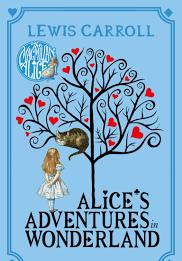
People have been reading books for hundreds and thousands of years. We have been telling stories since the very beginning of humanity. Cave drawings, spoken word, they’ve stood the test of time and all have ended up in a book, somewhere. Right now, we’re in a wave of reading and I don’t want it to slow down. If you’re not a reader, or even if you are let me give you some of the reasons why books have so much more value than the words on the page.
As a white woman, I understand the privilege my skin colour carries. But I wouldn’t have understood it without reading about others unlike me. I wouldn’t have known or understood the struggles without works like The Hate U Give by Angie Thomas, which shows the fight a young black girl is forced into after witnessing police brutality first-hand. Starfish by Akemi Dawn Bowman is another book I fell in love with and details the struggles of a young half-Japanese schoolgirl who grapples with her identity and how that affects her relationship with her narcissistic mother and the unrelenting social anxiety that controls her life. These books are important to the world and part of the reason why everyone should read.
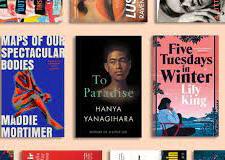
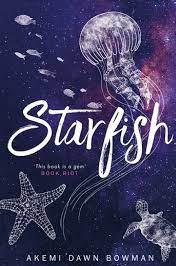
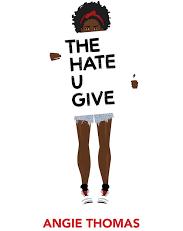
I had lots of exciting plans for my writing this summer, from another poetry book to finishing my novel and a plethora of article ideas. Somewhere along the way though, those plans fizzled out for multiple different reasons, and I just couldn’t get my brain to write. We all struggle to get our creative electrons buzzing in our brain, the best writers have writers block every now and then. Very often it can be your brain telling you to take a break, that you are burnt out and need to rest. No matter how experienced you are, there’s only so much magic you can create in one sitting. But more often than not, our brains want to write, have a million magnificent ideas but still, the page stays blank. Frustrating right? When you’ve got characters you want to flesh out, stories that need closure, and settings that just need an extra something to make them shine, but your brain is in a rut. Keep reading and find out the best ways to get your imagination flowing and finish that half written dusty novel that’s sitting on your shelf!
Start with self-care!
You can’t expect your brain to create if you’ve not given your body and brain what it needs to get those creative juice flowing! Get clean, showers help you think! I have produced some of my best ideas in the shower, it’s a perfect place to connect with your brain and just let your thoughts stream. Getting yourself into the right mindset that works for you is vital to this process, so whether it’s yoga, a smoothie, meditation or music, healthy dopamine hits help!
Get outside and experience nature! Draw inspiration from the world around you, it is amazing what your imagination can do with some prompting from the outside world. I find that quiet, open spaces help me think, places with animals and plants. But coffee shops and busy places can evoke great ideas too, it may be controversial, but the tail end of randomers conversations can sometimes spark the best stories. And if anything, getting outside might help you find a new perspective, and there is endless possibilities to an open mind.
Word vomit on a black page! Sometimes it is just a case of not being able to start, so take a blank page and just began writing the first thing that comes to mind and keep going until you have a full page and an empty brain, the opposite of how you started. You have a full-page of ideas to work from, I find it helps to then create spider diagrams for all my ideas and begin the word vomit process all over again.
Write a little every day!
Create a space that works for you! Having a space that belongs to you, that is set up to accommodate yourself can change your writing drastically. Whether that be neat and tidy with a prepared schedule for the day ahead. Or organised chaos all over your desk, everyone’s brain is different, but it’s important to find what environment works best for you, so that you’re writing can have the best chance to thrive.
It’s no secret that the best writers have a writing routine because when it comes to writing, practice makes progress. Even writing for a couple of hours everyday can help you develop skills and enhance your writing style/technique. Just as E.B White told the Paris Review after he wrote Charlotte’s Web “a writer who waits for ideal conditions under which to work will die without putting a word on paper.” Create your own ideal conditions because it’s also naive to think we can write without inspiration.
Our inner critics serve as well sometimes, but more often than not they can be our worst enemies. Try to refrain from judging yourself and comparing yourself to other writers, it won’t make you write better, but it will knock your confidence. Focus on your skills and nourishing them, turn the stress of the writers rut into fun games like making to do lists for your characters or seeing how many metaphors you can produce in a minute. And please for the love of yourself, stop editing, there will be time for that. For now, just enjoy the process and write.
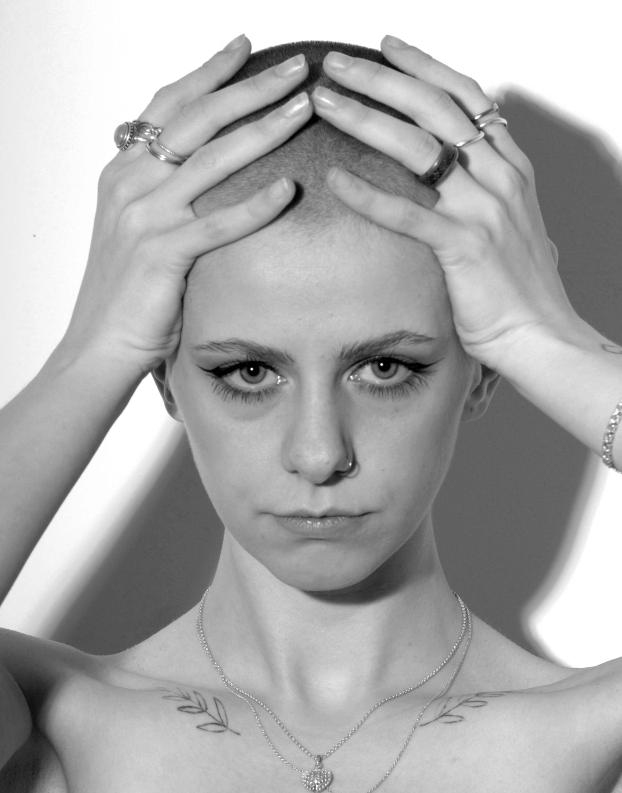 By Emma Victoria Jenky
By Emma Victoria Jenky
As a young girl, so much importance was carried in the strands of my hair. Long, blonde, and thick enough to weave into rope. Old women cooed over it and its golden glow whereas young women would beg me to never cut it off. Growing up, so many things around me changed, but the one thing I carried with me was the significance of my hair. It wasn’t because I though t it was beautiful or important, it was because of the emphasis put on it by the society around me.
I was 13 when I went to war with myself. Battles of anxiety and conflicts between me and my body. The toxic relationship with my hair began to grow, expressing everything that couldn’t be seen. Little did I know, this was on ly the beginning, and this toxic relationship would progressively get more abusive with age. In the process, it rusted what once was a golden crown.
After years of experimenting with my hair as a means of trying to ‘find my identity’, I realised it had become more of a mask, a disguise, something which was a given, not a choice. No matter how hard I tried, every hair style, every colour and every cut was one step further from who I was. For a long time, I was the victim of self-inflicted gaslighting. I bought into every society set beauty standard. Sprouting the idea that my hair was the only part left of me that was ‘beautiful’. And the worst part is, it wasn’t, it was the least authentic part of me.
It wasn’t until recently, after one of the worst battles I have ever been in with myself, that I decided enough was enough. I wanted to love me, I wanted to accept me, I just wanted to be me; but I didn’t know how to do that with all the expectations and standards of beauty. However, one thing I did know is that my hair was holding me back. So, I did what any sane person would do: I shaved it off. In
the hope that this would leave me no choice but to learn to love myself for everything I am - without my hair. It has encouraged me to be authentic regardless of the norms, because now I have already broken them.
shaving my head had nothing and everything to do with my aesthetic appearance. I didn’t do it for recognition, attention or as a fashion statement. I did it in opposition to those things. I didit in an aim to focus on the other parts of my being,inside and out. To strip myself of any beauty standards unintentionally met and heal the wounds caused by them. I thought, if people are giving me funny looks for my bald head, no matter what the rest of me looks like, why shouldn’t I just let go of my insecurities?
Being bald as a girl is an experience that I feel extremely lucky to be living. The good, the bad and all of the hard parts included. All of a sudden, every head turns when I walk past, not always necessarily in the way I would usually want. After a brief second, most of the turning heads eventually meet me with a smile. Without your hair, everything else about you stands out, your energy isn’t held back by the superficial standards we are born into. Knowing this doesn’t stop the funny looks, the head tilts, and mut-
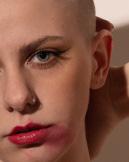
tered comments. What it does do is teach me how to not care about what others think or expect from me. The back handed comments flow faster than a waterfall. However now, they land on dry, unbothered rocks. The endless “why did you shave your head” comments are met with a different sarcastic response each time – “I just woke up like this” or “thanks I’ve been growing it out”.
I have said goodbye to any ‘pretty privilege’ I may have had and said hello to judgement and discrimination. A lot of people not so secretly mock, while others gossip to their friends under their breath. Jokes are made that I have to pretend are funny and when I meet someone new, their eyes wander to where my hair used to grow from, visibly flooding with internalised questions and preconceptions. On the flip side, the attention it has brought has led to people seeing me as interesting and beautiful in my own way. And I know they truly see me. I could go on to talk about how men treat me now I don’t have luscious locks, or how I wish I still had my hair but that isn’t what this is about. The point is to let go of these things, because really, I don’t care about my decline of sexual attraction to others or my insecurities that surround having no hair. It’s about knowing the outcome and still being comfortable in my decision.
This journey of self-discovery and acceptance isn’t one which is easy or even enjoyable.
I won’t lie. Its isn’t one which makes me feel stereotypically beautiful. It’s one which makes me feel at peace with myself and in return, the most confident I have ever been.
Without my hair, I can’t just fade into the background, in the way I would always aim to. I can’t just ‘fit in’, and that’s the exciting part. It allows me to question if I am being my true to myself, every day. Exploring until I find the person underneath the hair that used to grow. They day that I look in the mirror, and love the way my buzz cut hair looks, is the day ill grow it back, because only then will my journey be over.
Now, I see a completely new person. The one I feel I was always trying so hard to be. I purged myself of all the harboured negativity, standards, and expectations, cutting them off and disregarding them, along with my hair. The love that I am growing for myself blooms flowers of authenticity and acceptance. Every day I look in the mirror and I see that I am a reminder to myself, and hopefully other women, that beauty standards don’t really mean a thing. Not if we don’t let them.
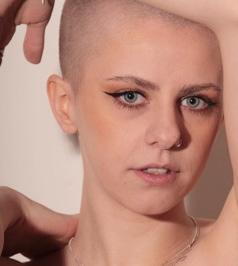
Ian McKellen is the fashion icon we didn’t know we needed.
Everybody’s favourite wizard strutted the runway for London Fashion Week in February, dressed in nautical design from S.S. Daley. It was a pleasant surprise to all when the 83-year-old actor opened the show to Kate Bush and delivered lines from Alfred, Lord Tennyson’s Arthurian poems. A moment for the fashion history books. Rising star Florence Pugh also made a noteworthy appearance at Harris Reed’s show. She spoke the words of the designer and in the monologue reiterated the transformative power of clothing.
If the shoe doesn’t fit, don’t wear it
Despite such fantastical appearances, and the clothes aside, the runway is not all drama and fairy-tale. Inclusivity is one of the biggest challenges of our time regarding the fashion community. Some do it well while others do not. Mainstream brands have started expanding their size ranges, following in the footsteps of independent and smaller businesses, as they often build the clothes around the person and their demographic. Let it be emphasised from the beginning that clothes should fit the body, the body should not fit into the clothes. It is not worth cutting off a toe to fit into the new Prada
hell, Cinderella’s stepsisters needed to calm down.
Celebrity brands are often the ones to really miss the target. Just a few years ago did Kylie Jenner introduce her line of swimwear, which received massive backlash from fans and consumers over the atrociously small amount of fabric at the crotch area of the swimming costumes. The quality was abhorrent, the material see-through, and the front coverage less than 5 cm wide (about 2-3 fingers).
The change is coming
It seems counterintuitive to narrow the market size by catering to a small portion of consumers, but high-end fashion and designer clothes are a luxury and exclusivity is a value.
A positive stand out at the Autumn/Winter
2023 collection at the London Fashion Week is Irish designer Sinéad O’Dwyer. The model sizes cast for the show ranged from 8 to 26, ethnicities were showed in multiplicity, pregnant people and wheelchair users stole the show. O’Dwyer explained in an earlier interview that she is prioritising inclusivity in her work. She, too, is aware that garments are typically made from conventional patterns that fit smaller sizes.
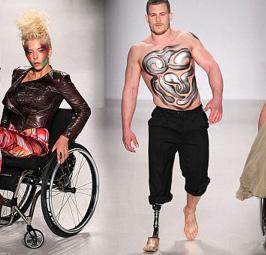
It is ground-breaking to know that the industry has come a long way since the 90s’ super-skinny supermodels, but that inclusivity is still mostly for show. The cookiecutter pattern of conformity is upheld when the clothes aired on the runway do not translate to the real
world. It is expensive and difficult to work with several block patterns for the same design and collaborating with several models instead of just one. Sometimes, time and money is the issue.
Sinéad O’Dwyer believes that working with fewer styles in collections and instead focusing on size inclusivity is the solutionto ill-fitting or size-limited clothing.However, commenters on runway videos point out that the models cast were not properly trained to model: their walk is sloppy and faces unengaged. This might be seen as trivial in the grand scheme of events, but it gives the impression that the people hired to showcase the clothes and inclusivity of the design are there on a whim to check off the point on the list that reads ‘inclusivity’. The designs are the trend, inclusivity is not; and unfortunately, some designers still need to be reminded of this.
It helps when large figures, just like Florence Pugh, enter the stage portraying an authentic representation of themselves: cellulite; nipples and all, they demand the representation that we deserve. For it is about damn time that all ages, bodies, ethnicities, races, sexes, and disabilities are dressed in clothes that fit.
The drive forward is coming from younger designers, models, and lovers of fashion. They are setting a new standard, now the big brands just need to let go of the old fairy-tale ideas of skinny elegance, for authentic beauty which is found in real people.
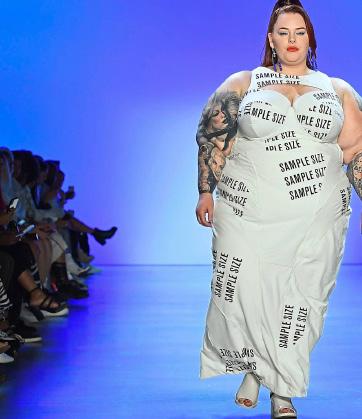
 By Carly McKim
By Carly McKim
Fast fashion has been growing the last few years, thanks to the rise of apps like TikTok it seems that we have been going through trends much quicker. A “trend cycle” usually lasts around 10-20 years. Which makes sense when we have iconic fashion from decades like the 80s and 90s as not many changes. These days this has not been the case due to TikTok and other social media. Microtrends have been growing at an accelerating rate. A microtrend is in regard to a style or item of clothing that rises in popularity extremely and falls out of favour just as fast. This can be months or sometimes even weeks. A good example is Vivienne Westwood pearl choker necklace. During 2020 boys and girls on TikTok wore this iconic piece while dancing to Doja Cat and posting their thirst traps. Fast Forward only 3 years, it is nowhere to be seen. You may be thinking “so what, things go in and out of style all the time” but there is more to it. We all want to dress well and join in on the trends, but can this be affecting our planet?. The Fashion industry contributes to 10% of all greenhouse gases which is a huge percentage for one industry. If there are shorter trend cycles that means, there’s more clothes, we are convinced we must buy. In order to head towards a more sustainable lifestyle we cannot carry on like this. The need and pressure to follow trends we see online and has gone too far. It is perfectly okay to like a trend but to constantly change your wardrobe every couple month is not a sustainable way to be. It is killing our individuality.
I’m sure you’ve heard someone say, “There is not an ethical way to consume under a capitalist society” This is true to an extent but when we have better options, if we are able to choose them, we should. Here at Braw we want our readers to learn how their individual choices can help to make our planet a better place, because who doesn’t want that. Step away from the microtrend. You don’t have to find clothes all the time, all year round. Trends can be fun to join in on, but you don’t have to follow every single one of them. Instead try to figure out what you like and what suits you best. It can take a bit of time but discovering how you want to present yourself to the world can be a very fun experience. Leather is trending but hate the fabric? Just don’t buy it, missing out on a trend won’t make your clothes look any older, you will look more yourself.
Sustainable companies tend to be more expensive. For the average broke student this isn’t an option. Apps like vinted and depop have become very popular over the last few years. With some people saying that vinted is much better at being able to find cheap clothes. By shifting through the overpriced “Y2K” tops there is a chance you can find a real gem in there. It just takes some time. Selling clothes that no longer serve a purpose is a great way to earn money and also gives your clothes a chance to be loved again instead of fencing up in a landfill.
We all should Thrift more. As no new materials need to be imported, no additional manufacturing is necessary, no carbon is emitted during shipping, no money is spent on marketing, and so on, thrifting avoids many sustainability issues. It's a win for our bank accounts and the environment. Here's 4 simple things to look for when you’re trying to shop second hand.
It can be hard finding the right pair of jeans and even harder for the right price. Buying second is way more convenient for everyone. Those old Mum Jeans that don't fit the same anymore could easily be given a new home
Some of the easiest pieces of clothing to find are your basic t-shirts. They are timeless and go with literally anything. Why buy that brand new black top when there's 100s of them over on vinted and depop.
Shops like Urban Outfitters and Motel Rocks have lovely clothes but can be very pricey at times. Searching hashtags using Brands and Stores you love can help you find that top you’ve been looking at a lot quicker. You might even find something that isn't in stores anymore that needs a new owner,

Funky sunglasses for the summer are a need each year, especially with festival season upon us. Why not try to be different from the rest and get your sunnies second hand. You tend to find much more variety in charity shops.
Image Credit: BeBiodiversity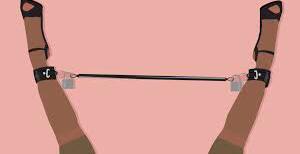
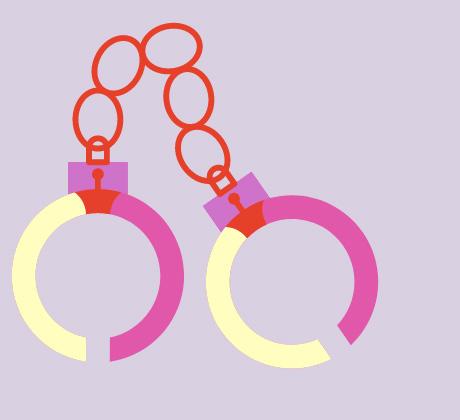 By Samantha McBride
By Samantha McBride
Sexual kinks refer to specific behaviours or preferences that deviate from what is considered “normal” sexual behaviour. These kinks can be a source of excitement and pleasure for those who engage in them, but they can also be stigmatized and misunderstood by those who do not.
So, what causes sexual kinks? The answer lies in the complex interplay between biology, psychology, and culture.
From a biological perspective, sexual attraction and arousal are driven by a complex mix of hormones, neurotransmitters, and genetic factors. For example, research has shown that the hormone testosterone plays a role in shaping sexual preferences and behaviours in both men and women.
There is limited research on the relationship between neuropsychology and sexual kinks, but some studies have
suggested that there may be certain neurological and cognitive factors that are associated with a greater likelihood of engaging in or being interested in kink-related behaviours.
For example, foot fetishes are a type of sexual preference where individuals experience sexual attraction or arousal towards feet. While the exact causes of foot fetishes are not well understood, it is believed to be related to the way the brain processes sensory information. Studies have shown that there is some overlap between the neurons responsible for processing genital and foot sensations in the brain. This means that the same areas of the brain that respond to genital stimulation can also be activated by stimulation of the feet.
However, it is important to note that not all individuals who have foot fetishes necessarily experience genital sensations when their feet are stimulated. Additionally, the brain is a complex organ, and the exact mechanisms behind the development of foot fetishes are still being researched.
Moreover, A study published in the Journal of Sexual Medicine used
functional magnetic resonance imaging (fMRI) to examine brain activation in response to visual sexual stimuli in individuals with and without atypical sexual preferences. The study found that individuals with atypical sexual preferences had greater activation in the amygdala, a brain region involved in processing emotions, compared to those without. This suggests that individuals with kinks and fetishes may experience a stronger emotional response to sexual stimuli.
Similarly, another study published in the Archives of Sexual Behaviour used EEG to measure brain activity in response to sexual and non-sexual stimuli in individuals with and without fetishes. The study found that individuals with fetishes had greater activation in the prefrontal cortex, a brain region involved in decision making and impulse control, compared to those without fetishes. This suggests that individuals with fetishes may have a heightened ability to control their sexual urges
Psychologically, sexual kinks can be linked to a variety of factors, including
childhood experiences, personality traits, and sexual fantasies. Some experts believe that early experiences, such as sexual abuse or trauma, can shape a person’s sexual preferences later in life. Others argue that kinks may arise as a way of coping with anxiety, stress, or other emotional issues.
Some studies have suggested that there may be certain personality traits that are associated with a greater likelihood of engaging in or being interested in kink-related behaviours.
One study published in the Journal of Sex Research found that individuals who reported engaging in BDSM activities (bondage/discipline, dominance/submission, and sadomasochism) scored higher on measures of openness to experience, conscientiousness, and extraversion, and lower on measures of neuroticism, compared to those who did not engage in BDSM activities.
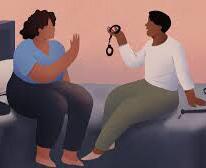

Another study published in the Archives of Sexual Behaviour found that individuals who reported having a fetish (a sexual attraction to an object, body part, or material) were more likely to score higher on measures of extraversion, openness to experience, and neuroticism, and lower on measures of agreeableness, compared to those who did not report having a fetish.
It’s important to note that these studies have limitations and are not conclusive, and that engaging in kink-related behaviours or having fetishes does not necessarily indicate any particular personality trait or disorder. Sexual preferences and behaviours are complex and influenced by a variety of factors, including personal values, cultural norms, and individual experiences. It’s also important to engage in sexual behaviours that are safe, consensual, and respectful of others.
Conditioning refers to the process of learning by association, where an individual learns to associate one stimulus with another through repeated exposure. For example, if someone has a positive experience while wearing a particular type of clothing, they may develop a fetish for that clothing.
In terms of conditioning, a person may develop a fetish by repeatedly associating a particular stimulus (such as an object, body part, or activity) with sexual arousal or pleasure.
For example, if someone is exposed to a specific object or activity while experiencing sexual pleasure, they may learn to associate that object or activity with sexual arousal and develop a fetish for it.
It’s important to note that not all fetishes are caused by conditioning, and there is no one-size-fits-all explanation for why someone may develop a fetish. Factors such as genetics, early childhood experiences, and individual differences in brain structure and function may also play a role in the development of fetishes.
Cultural factors can also play a role in shaping sexual kinks. For example, different societies and cultures have different attitudes towards sex and sexuality, which can influence the types of behaviours and preferences that are considered “acceptable” or “normal”. Some kinks, such as BDSM (bondage, dominance, submission, and masochism), are more widely accepted in certain cultures than in others.
While sexual kinks are often viewed as taboo or deviant, it is important to recognize that they are a normal and natural aspect of human sexuality. By understanding the complex interplay of biology, psychology, and culture that underlies sexual kinks, we can better appreciate the diversity of human sexual expression and work towards creating a more accepting and inclusive society. However, it is also important to recognize that consent and mutual respect are essential in any sexual encounter, regardless of the presence or absence of kinks.
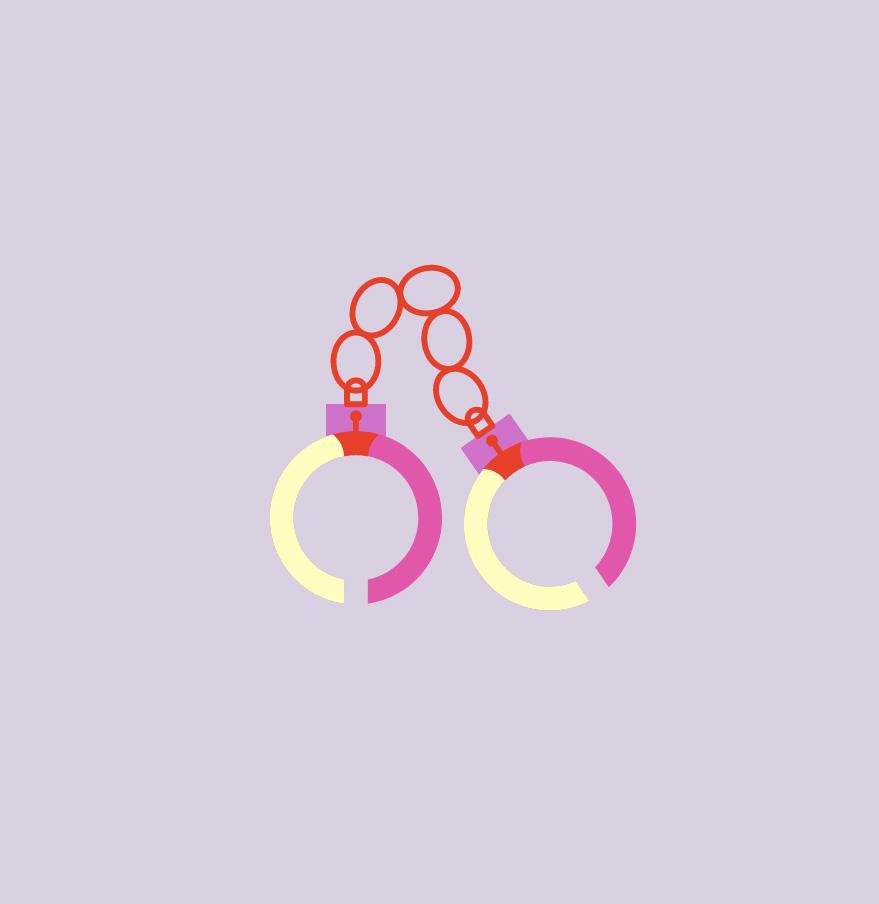 Image Credit: Glamour
Image Credit: Glamour



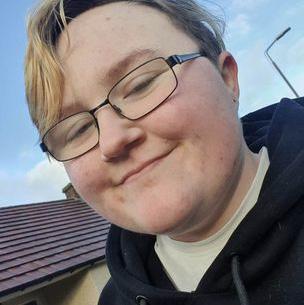

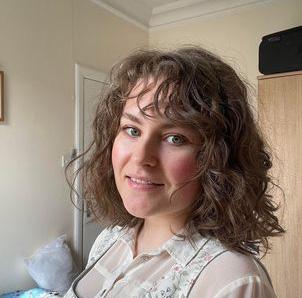
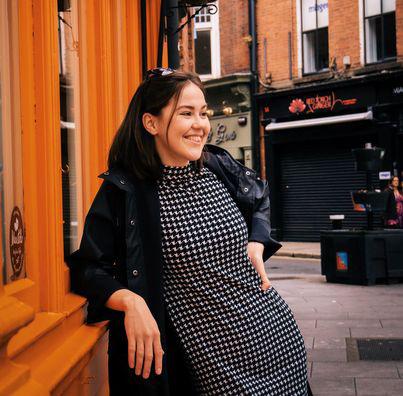
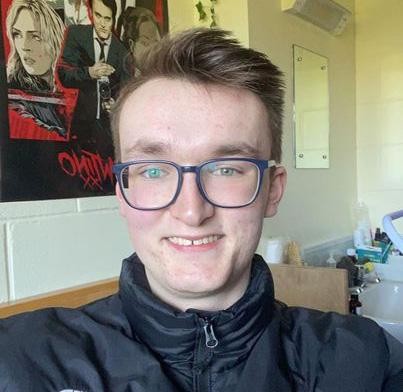


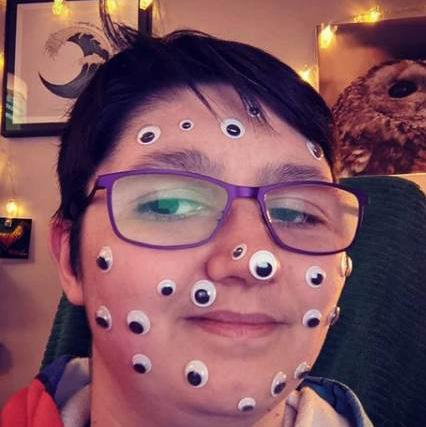
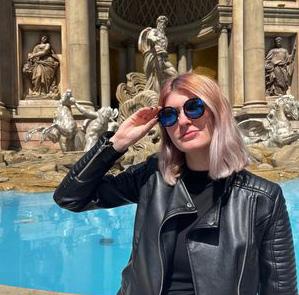
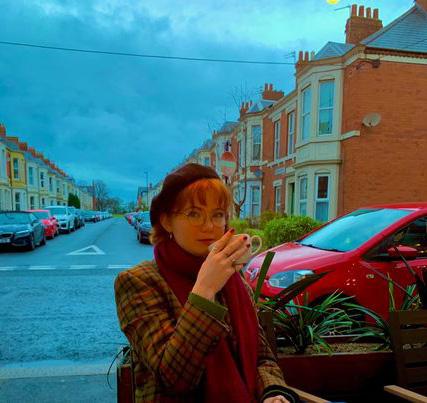
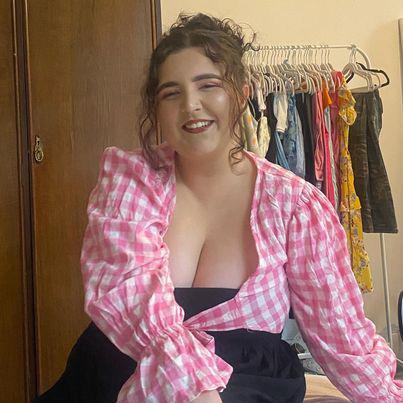
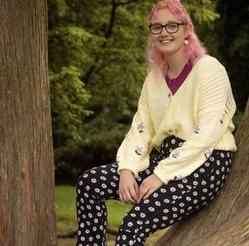
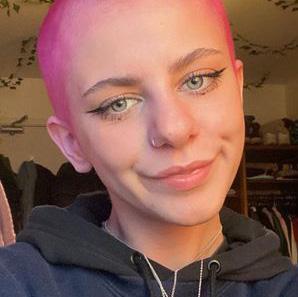

 Hannah Coyle
Aysun Bora
Carly McKin
Emma Jenky
Samantha McBride
Fionla Clarke
Jules Adamska
Ali Rees
Isla Glen
AJ Whyte
Ben McSwam
Simi Borovskà
Julie Brinking
Deanna Dawn
Skylar Dickie
Sofia Sculati
Hannah Coyle
Aysun Bora
Carly McKin
Emma Jenky
Samantha McBride
Fionla Clarke
Jules Adamska
Ali Rees
Isla Glen
AJ Whyte
Ben McSwam
Simi Borovskà
Julie Brinking
Deanna Dawn
Skylar Dickie
Sofia Sculati